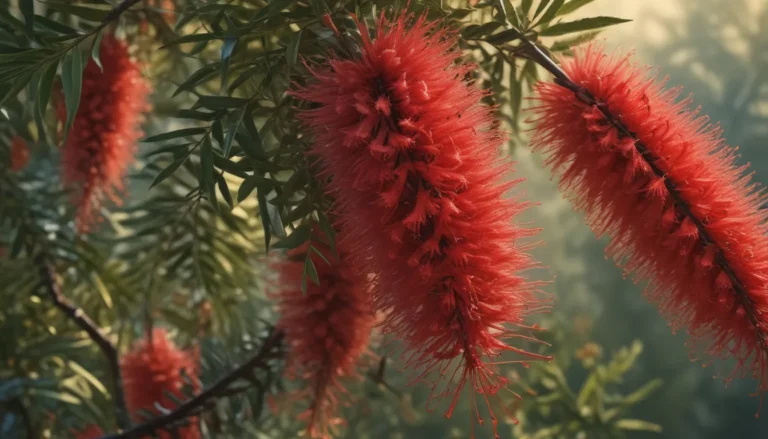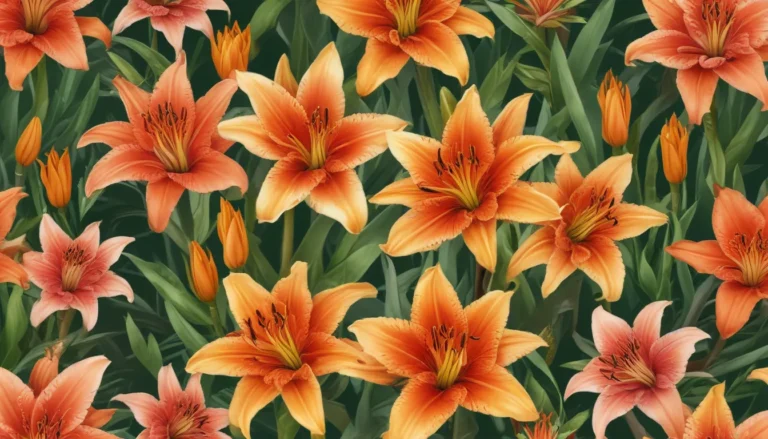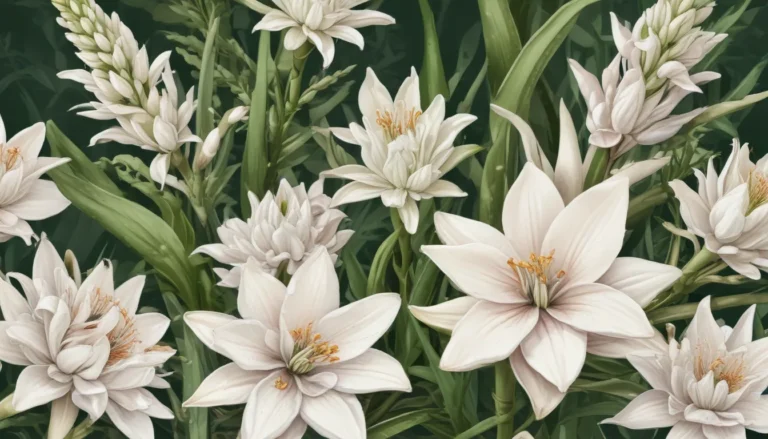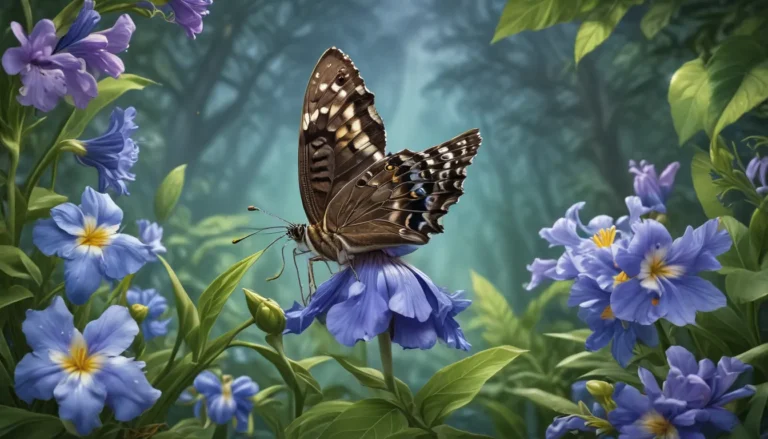The pictures we use in our articles might not show exactly what the words say. We choose these pictures to make you interested in reading more. The pictures work together with the words but don’t take their place. The words still tell you the important facts.
The gorse bush, a resilient and vibrant plant species, stands out in the world of flora with its striking yellow flowers and formidable thorns, making it a unique presence in various landscapes, from coastal areas to open moorlands. Also known as furze or whin, the gorse bush boasts a rich history intertwined with folklore and practical uses. In this article, we delve into 15 fascinating facts about the gorse bush, shedding light on its ecological significance, cultural symbolism, and diverse applications. Whether you're a nature enthusiast, a gardening aficionado, or simply curious about the wonders of the natural world, these insights will deepen your appreciation for this remarkable plant. Join us on a journey through the intriguing world of the gorse bush as we uncover its hidden marvels and unravel the mysteries that surround this captivating botanical wonder.
The Allure of Gorse Bushes
Gorse bushes, native to Western Europe, grace the countryside with their presence, thriving in poor soil conditions, displaying bright yellow flowers, and emitting a delightful coconut scent. These hardy bushes serve as wildlife habitats and have historical, medicinal, and symbolic significance. Let's explore the captivating world of gorse bushes through these key takeaways:
- Gorse bushes flourish in poor soil conditions, adding vibrant color to coastal landscapes and supporting biodiversity.
- The bright yellow flowers of gorse bushes bloom year-round, showcasing their resilience and beauty.
- Despite their thorny spines, gorse bushes emit a pleasant coconut scent, appealing to both the eyes and the nose.
Gorse Bushes: A Treasure of Western Europe
Gorse bushes, also known as Ulex, are native to Western Europe, particularly prevalent in coastal areas where they add a vibrant splash of color to the landscape. Thriving in poor soil conditions, including sandy and acidic soils, gorse bushes demonstrate their resilience and enduring nature.
The Vibrant Yellow Flowers of Gorse Bushes
One of the most striking features of gorse bushes is their display of bright yellow flowers. These flowers bloom throughout the year, peaking in spring and illuminating the surroundings with their vivid hue, enhancing the beauty of their habitats.
The Thorny Nature of Gorse Bushes
Characterized by dense, spiky foliage adorned with sharp thorns, gorse bushes possess a natural defense mechanism that deters herbivores and contributes to their hardy nature. Despite their thorny exterior, gorse bushes are a symbol of resilience in the natural world.
The Sweet Scent of Gorse Bushes
A unique characteristic of gorse bushes is the coconut-like fragrance emitted by their flowers, adding a delightful olfactory dimension to their visual appeal. The sweet scent of gorse bushes enhances their allure and charm in various landscapes.
Gorse Bushes: A Haven for Wildlife
These bushes provide essential habitats for a variety of wildlife, offering shelter and nesting sites for birds and insects. The dense foliage of gorse bushes supports biodiversity, contributing to the richness of their surrounding ecosystems.
The Historical Significance of Gorse Bushes
Throughout history, gorse bushes have held cultural and practical significance, being utilized for thatching, fuel, and livestock fodder. Their versatile nature and valuable properties have made gorse bushes an integral part of human history and traditions.
Medicinal Uses of Gorse Bushes
In traditional herbal medicine, various parts of the gorse bush have been used for their purported medicinal properties. From treating skin conditions to brewing herbal teas, gorse has been a source of natural remedies for centuries, showcasing its diverse uses and benefits.
Symbolism in Folklore
Gorse bushes have been steeped in folklore and symbolism, representing endurance, protection, and hope in various cultural narratives and traditions. Their presence in folklore highlights the profound impact of nature on human beliefs and storytelling.
Conservation Efforts for Gorse Bushes
Despite their resilience, gorse bushes face conservation concerns in certain regions due to wildfires and habitat loss. Conservation efforts are underway to protect and sustain the presence of these valuable plants in the natural landscape, recognizing their ecological importance.
Cultivation for Horticultural Purposes
Beyond their wild habitats, gorse bushes are cultivated for ornamental and horticultural purposes, adding a touch of natural beauty to gardens and landscapes. Their vibrant blooms and unique characteristics make gorse bushes a popular choice for gardening enthusiasts.
Traditional Crafts and Gorse Bushes
The resilient and versatile nature of gorse bushes has made them a valuable resource in traditional crafts, including basket weaving and thatching. These age-old techniques preserve the cultural significance of gorse bushes and highlight their enduring value in craftsmanship.
Celebrating Gorse Bushes in Art and Literature
The striking appearance and cultural significance of gorse bushes have inspired artists and writers, featuring prominently in various forms of creative expression and storytelling. Gorse bushes serve as a muse for creative minds, capturing the essence of their beauty and symbolism.
Gorse bushes, also known as Ulex, hold a special place in Western European landscapes, known for their resilience, vibrant blooms, and cultural significance. These evergreen shrubs thrive in challenging environments and play a crucial role in supporting biodiversity. With their historical, ecological, and cultural importance, gorse bushes continue to captivate and contribute to the rich tapestry of the natural world.
In Appreciation of Gorse Bushes
In conclusion, gorse bushes are remarkable plants that offer numerous benefits to the environment and wildlife. From their vibrant yellow flowers to their ability to thrive in challenging conditions, gorse bushes are truly fascinating. Their historical significance, diverse uses, and ecological importance make them a valuable component of various landscapes. Whether admired for their beauty, utilized for their practical applications, or appreciated for their role in supporting biodiversity, gorse bushes hold a special place in the natural world. By understanding and celebrating the unique characteristics of gorse bushes, we can foster a deeper appreciation for these resilient and versatile plants.
Dive Deeper: FAQs
What are the traditional uses of gorse bushes?
Gorse bushes have been utilized for centuries for various purposes. The flowers were historically used in herbal remedies, while the plant's dense growth provided valuable shelter for livestock and wildlife.
Are gorse bushes invasive?
While gorse bushes can be invasive in certain regions, they also play a vital ecological role in supporting biodiversity. It's important to manage their growth in areas where they may pose a threat to native species while recognizing their ecological value.
Elevating Your Knowledge
Our commitment to delivering trustworthy and engaging content is at the heart of what we do. Each fact on our site is contributed by real users like you, bringing a wealth of diverse insights and information. To ensure the highest standards of accuracy and reliability, our dedicated editors meticulously review each submission. This process guarantees that the facts we share are not only fascinating but also credible. Trust in our commitment to quality and authenticity as you explore and learn with us.






